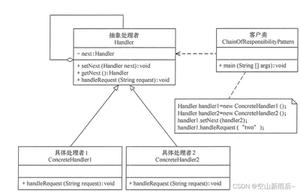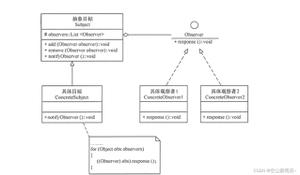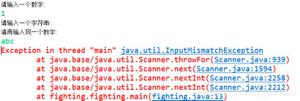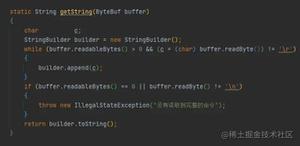在JavaScript中实现链式调用的实现
链式调用实现本身比较简单,也有很多文章详细阐述了其实现方式。本文更多从链式调用方法返回值的角度,更进一步来说明如何实现链式调用。
什么是链式调用
链式调用在 JavaScript 语言界很常见,如 jQuery 、 Promise 等,都是使用的链式调用。链式调用可以让我们在进行连续操作时,写出更简洁的代码。
new Promise((resolve, reject) => {
resolve();
})
.then(() => {
throw new Error('Something failed');
})
.then(() => {
console.log('Do this whatever happened before');
})
.catch(() => {
console.log('Do that');
})
逐步实现链式调用
假设,我们要实现一个 math 模块,使之能够支持链式调用:
const math = require('math');
const a = math.add(2, 4).minus(3).times(2);
const b = math.add(2, 4).times(3).divide(2);
const c = { a, b };
console.log(a.times(2) + b + 1); // 22
console.log(a.times(2) + b + 2); // 23
console.log(JSON.stringify(c)); // {"a":6,"b":9}
基本的链式调用
链式调用通常的实现方式,就是在函数调用结果返回模块本身。那么 math 模块的代码大致应该是这样子的:
export default {
add(...args) {
// add
return this;
},
minus(...args) {
// minus
return this;
},
times(...args) {
// times
return this;
},
divide(...args) {
// divide
return this;
},
}
方法如何返回值
上述代码实现了链式调用,但是也存在一个问题,就是无法获取计算结果。所以我们需要对模块进行改造,使用一个内部变量来存储计算结果。
export default {
value: NaN,
add(...args) {
this.value = args.reduce((pv, cv) => pv + cv, this.value || 0);
return this;
},
}
这样,我们在最后一步,通过 .value 就可以拿到最终的计算结果了。
问题真的解决了吗
上面我们看似通过一个 value 变量解决了存储计算结果的问题,但是发生第二次链式调用时, value 的值因为已经有了初始值,我们会得到错误的计算结果!
const a = math.add(5, 6).value; // 11
const b = math.add(5, 7).value; // 23 而非 12
既然是因为 value 有了初始值,那么能不能在获取 value 的值时重置掉呢?答案是不能,因为我们并不能确定使用者会在什么时候取值。
另外一种思路是在每次链式调用之前生成一个新的实例,这样就可以确保实例之间相互独立了。
const math = function() {
if (!(this instanceof math)) return new math();
};
math.prototype.value = NaN;
math.prototype.add = function(...args) {
this.value = args.reduce((pv, cv) => pv + cv, this.value || 0);
return this;
};
const a = math().add(5, 6).value;
const b = math().add(5, 7).value;
但是这样也不能彻底解决问题,假设我们如下调用:
const m = math().add(5, 6);
const c = m.add(5).value; // 16
const d = m.add(5).value; // 21 而非 16
所以,最终要解决这个问题,只能每个方法都返回一个新的实例,这样可确保无论怎么调用,相互之间都不会被干扰到。
math.prototype.add = function(...args) {
const instance = math();
instance.value = args.reduce((pv, cv) => pv + cv, this.value || 0);
return instance;
};
如何支持不通过 .value 对结果进行普通运算
通过改造 valueOf 方法或者 Symbol.toPrimitive 方法。其中 Symbol.toPrimitive 方法优先 valueOf 方法被调用,除非是ES环境不支持。
如何支持 JSON.stringify 序列化计算结果
通过自定义 toJSON 方法。 JSON.stringify 将值转换为相应的JSON格式时,如果被转换值有 toJSON 方法,则优先使用该方法返回的值。
最终的完整实现代码
class Math {
constructor(value) {
let hasInitValue = true;
if (value === undefined) {
value = NaN;
hasInitValue = false;
}
Object.defineProperties(this, {
value: {
enumerable: true,
value: value,
},
hasInitValue: {
enumerable: false,
value: hasInitValue,
},
});
}
add(...args) {
const init = this.hasInitValue ? this.value : args.shift();
const value = args.reduce((pv, cv) => pv + cv, init);
return new Math(value);
}
minus(...args) {
const init = this.hasInitValue ? this.value : args.shift();
const value = args.reduce((pv, cv) => pv - cv, init);
return new Math(value);
}
times(...args) {
const init = this.hasInitValue ? this.value : args.shift();
const value = args.reduce((pv, cv) => pv * cv, init);
return new Math(value);
}
divide(...args) {
const init = this.hasInitValue ? this.value : args.shift();
const value = args.reduce((pv, cv) => pv / cv, init);
return new Math(value);
}
toJSON() {
return this.valueOf();
}
toString() {
return String(this.valueOf());
}
valueOf() {
return this.value;
}
[Symbol.toPrimitive](hint) {
const value = this.value;
if (hint === 'string') {
return String(value);
} else {
return value;
}
}
}
export default new Math();
以上是 在JavaScript中实现链式调用的实现 的全部内容, 来源链接: utcz.com/z/352884.html









